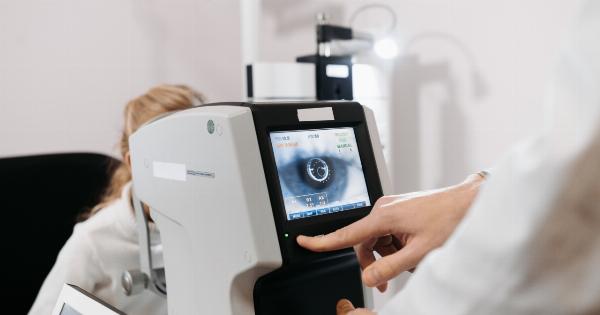It is often said that the eyes are the windows to the soul, but did you know that they can also provide valuable insights into your overall health? Research has shown that various signs and symptoms in the eyes can serve as indicators of underlying cardiovascular conditions. From changes in the blood vessels to alterations in the appearance of the retina, your eyes can provide crucial clues to your heart health.
1. The Link Between Blood Vessels and Heart Disease
The intricate network of blood vessels in the eyes can reflect the state of your cardiovascular system. One significant eye condition linked to heart health is retinopathy.
This condition occurs when the small blood vessels in the retina, located at the back of the eye, become damaged. Retinopathy is commonly associated with diabetes, but it can also be an early sign of hypertension and atherosclerosis.
Moreover, a study published in the medical journal Hypertension found that individuals with narrower retinal arteries were more likely to develop high blood pressure and other heart-related issues.
This suggests that changes in the retina’s blood vessels could serve as a potential predictor of cardiovascular risk.
2. Yellow Deposits: A Window into High Cholesterol
High cholesterol is a significant risk factor for heart disease, and it turns out that the eyes can reveal telltale signs of this condition as well.
Xanthelasma, yellowish deposits that form on the eyelids, can be an indication of high cholesterol levels.
Although xanthelasma itself is usually harmless, it suggests the presence of elevated cholesterol within the body.
If you notice these fatty deposits around your eyes, it is crucial to consult with a healthcare professional to assess your lipid profile and evaluate your cardiovascular health.
3. Paleness in the Eyelid: Anemia and Poor Circulation
If the inner lining of your lower eyelid appears pale, it might be a sign of anemia or poor blood circulation. Anemia occurs when your body lacks a sufficient number of red blood cells or hemoglobin, leading to reduced oxygen levels.
This deficiency can manifest in the color of the lower eyelid, potentially indicating an underlying cardiovascular problem.
Moreover, impaired blood flow, commonly associated with peripheral artery disease (PAD), can also cause paleness in the eyelids. PAD is a condition where fatty deposits accumulate in the arteries, restricting blood flow to the extremities and organs.
Identifying paleness in the eyelids can prompt early detection and treatment of both anemia and circulatory disorders.
4. Corneal Arcus: Lipid Build-Up and Cardiovascular Risk
The cornea, the transparent layer at the front of the eye, can exhibit a condition known as corneal arcus. This condition appears as a white or grayish ring-like deposit around the edge of the cornea, typically seen in older individuals.
Corneal arcus results from a build-up of lipids or fats, specifically cholesterol, in the eye. While corneal arcus itself is harmless, it has been linked to an increased risk of cardiovascular disease.
Research suggests that corneal arcus may serve as an indicator of elevated cholesterol levels, making it crucial to further assess and manage cardiovascular risk factors.
5. Obtaining a Retinal Picture: Potential for Early Detection
Advancements in medical imaging have made it possible to capture detailed images of the retina, providing healthcare professionals with valuable information about an individual’s overall health and potential cardiovascular risk factors.
By examining retinal images, medical experts can identify abnormalities and signs that may indicate an increased likelihood of developing heart disease.
For example, abnormalities in the shape or size of the retinal vessels can signal hypertension or atherosclerosis.
Retinal hemorrhages, cotton wool spots, or microaneurysms may indicate diabetic retinopathy, a condition highly correlated with cardiovascular diseases.
6. Changes in Eye Pressure: Glaucoma and Hypertension
Glaucoma is a group of eye conditions that lead to damage to the optic nerve, often caused by increased pressure within the eye. While glaucoma primarily affects vision, studies have found a potential link between this condition and hypertension.
A study published in the journal PLOS ONE found that individuals with high blood pressure were more likely to develop glaucoma. Additionally, increased eye pressure has been observed in hypertensive patients.
Monitoring eye pressure and managing hypertension can help reduce the risk of glaucoma and potentially aid in the prevention of other cardiovascular complications.
7. Dry Eyes and Inflammation: Systemic Connection
The eyes can also be affected by systemic conditions such as autoimmune diseases. Diseases like Sjögren’s syndrome, rheumatoid arthritis, and lupus can cause dry eyes, a condition known as keratoconjunctivitis sicca.
These autoimmune diseases involve chronic inflammation throughout the body, which can also affect blood vessels and increase the risk of cardiovascular problems.
By addressing the underlying inflammatory condition, it is possible to mitigate the risk to both ocular and cardiovascular health.
8. Eye Twitching: A Manifestation of Stress and Hypertension
Have you ever experienced an involuntary twitching in your eye? Referred to as eyelid myokymia, this condition is often harmless and temporary. However, in some cases, it can be indicative of an underlying health issue.
Eye twitching has been linked to stress and fatigue, but it can also be associated with high blood pressure. Hypertension imposes strain on blood vessels, including those in the eyes, which can manifest as eyelid myokymia.
If eye twitching becomes chronic or persistent, it is advisable to consult a healthcare professional to investigate possible underlying conditions.
9. Optic Disc Changes: Hypertension and Increased Intracranial Pressure
The optic disc, where the optic nerve connects to the retina, can undergo changes that provide insights into both ocular and cardiovascular health. Certain alterations in the optic disc can indicate increased intracranial pressure and optic disc edema.
Moreover, hypertensive retinopathy may cause swelling or bleeding of the optic disc. These changes can occur due to long-term, uncontrolled hypertension and can be a sign of potential damage to the blood vessels supplying the eyes and brain.
10. The Importance of Regular Eye Exams
Given the intricate relationship between ocular and cardiovascular health, routine eye exams are essential for disease prevention and early detection.
During an eye exam, optometrists and ophthalmologists can evaluate the health of your eyes and identify potential signs of underlying cardiovascular conditions.
Additionally, eye exams allow for the measurement of intraocular pressure, which can aid in the early diagnosis of hypertension and the prevention of glaucoma.
By maintaining regular eye exams, you can take a proactive approach to both ocular and cardiovascular well-being.
Conclusion
Your eyes are not only the windows to your soul, but they also hold valuable clues to your heart health.
From changes in blood vessels and lipid deposits to alterations in the retina and optic disc, various eye conditions and symptoms can be indicators of underlying cardiovascular problems.
Regular eye exams, alongside maintaining a healthy lifestyle and managing cardiovascular risk factors, play a crucial role in preventing heart disease.
By prioritizing eye health, you are actively prioritizing your overall well-being, allowing for the early detection and timely management of potential cardiovascular issues.





























